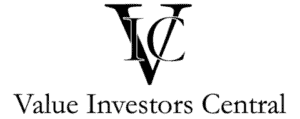Value investing is a long-term strategy and has been around since the 1920s. This means that we can look at over 100 years of data to see its performance over a significant period compared to alternative strategies. Let’s first look at the returns of what the broad market considers value stocks and compare them to growth stocks.
Over rolling 15-year periods from 1927 to 2019, value stocks outperformed growth stocks by 93 percent. The results are even more promising when looking at individual long-term value investors, especially compared to short-term trading.
However, it must be noted that there is no universal definition for value and growth. Let’s look at what the broad market considers value and growth, what value means to true value investors, and how they have performed.
Defining growth stocks and value stocks
Growth stocks represent companies that have historically performed better-than-average profit in earnings and are expected to continue to deliver above-average gains. Usually, investors are willing to pay a higher multiple, or PE Ratio, for this high earnings rate, but these stocks tend to be more volatile. Tech stocks, such as Apple and Tesla, are typical examples.
Value stocks represent companies whose earnings have historically had a steady growth in revenues and are also expected to grow at a constant rate. Because of this, they tend to have a lower multiple (PE Ratio) than the broader market. These companies tend to be older and in the “boring” sectors, such as industrials, utilities, and financials. However, true value investors can find value in any company with great fundamentals when: the market has overreacted to recent lower than expected earnings, legal issues, or negative news but is expected to grow at a faster pace in the future and has excellent long-term prospects.
Further defining value investing
In the definition above, we are generalizing what value vs. growth is when in fact, true value investors would say value investing is just getting more value than what you pay for. It is the process of doing the detective work to find companies selling at below their intrinsic value with the hope that the market will price the company fairly over time. This often requires patience and a long-term outlook. When paying high multiples, such as those often described as growth stocks, you are less likely to receive more than what you pay for.
Value investing is not just looking for companies with low PE ratios, older companies, or only sectors such as industrials or utilities. Indeed, value can often be found in companies with these characteristics; for example, Warren Buffett has famously invested in oil, railroad, and utility companies. Although a low PE ratio tends to be the most common characteristic of value investing, he had also invested in Apple, which is his largest holding and was purchased when its PE Ratio was between 10 and 15.
How have value investors performed over the long term?
We can measure the returns of investors who have adopted this strategy and compare it to the overall market, i.e., the S&P 500.
If we look at the returns of the investors who studied under the founder of value investing, Benjamin Graham, we can see that all of their funds have beaten the S&P 500. Warren Buffett, the most famous of these investors, from 1965 to 2021, has returned a compounded annual gain of 20.1% versus the S&P 500’s 10.5%. Walter Schloss from 1955 to 2000 had annualized returns of 15.3% versus the S&P 500’s 10%, Tweedy Browne from 1968 to 1983 returned 20% versus the S&P 500’s 7%, and Bill Ruane’s Sequoia Fund from 1970 to 2021 has returned 13.62%.
And these are just a few of the well-known value investors in the industry. For a whole list of “Superinvestors” such as Mohnish Pabrai, Guy Spier, David Einhorn, Li Lu, and Seth Klarman, you can go to Dataroma.com to see their historical returns.
Comparing short term trading to long term value investing
Let’s look at the most extreme example of short-term trading; Robinhood. A study by Barber, 2020, titled “Attention Induced Trading and Returns: Evidence from Robinhood Users,” studied traders from May 2018 to August 2020 and found that the top 0.5% of stock bought on Robinhood each day returned a negative 5% over the next month. Another study by Barber, which took a longer-term view published in 2011, looked at 360,000 day-traders in Taiwan over 15 years from 1992 to 2006 and found that only 15% of traders earn higher returns than the market. And finally, a study by Chague, 2019, titled “Day trading for a Living?” found in a study of 1,600 day-traders that those that traded for more than 300 days 97% lost money.
While this isn’t exactly comparing apples to apples, it indicates that trading in the short term is significantly less likely to produce the gains that long-term investing does. One reason is that the worst days in the stock market are often followed quickly by the best days. These sharp upward rebounds can account for most of the market’s overall return. For example, if you had stayed invested in the S&P 500 for the last 20 years, you would have earned 9.4%. Missing out on the ten best days would cause your returns to fall to 5.09%, and if you had missed the 30 best days over the 20 years, your returns would be a measly 0.21%.
If you want to do well in the market statistically, do not sell, try and time the market, and do not trade. It is better to ride out the volatility, even when stressful. By buying a high-quality business with excellent fundamentals, you can rest easier that your investments will continue to rise over time.


